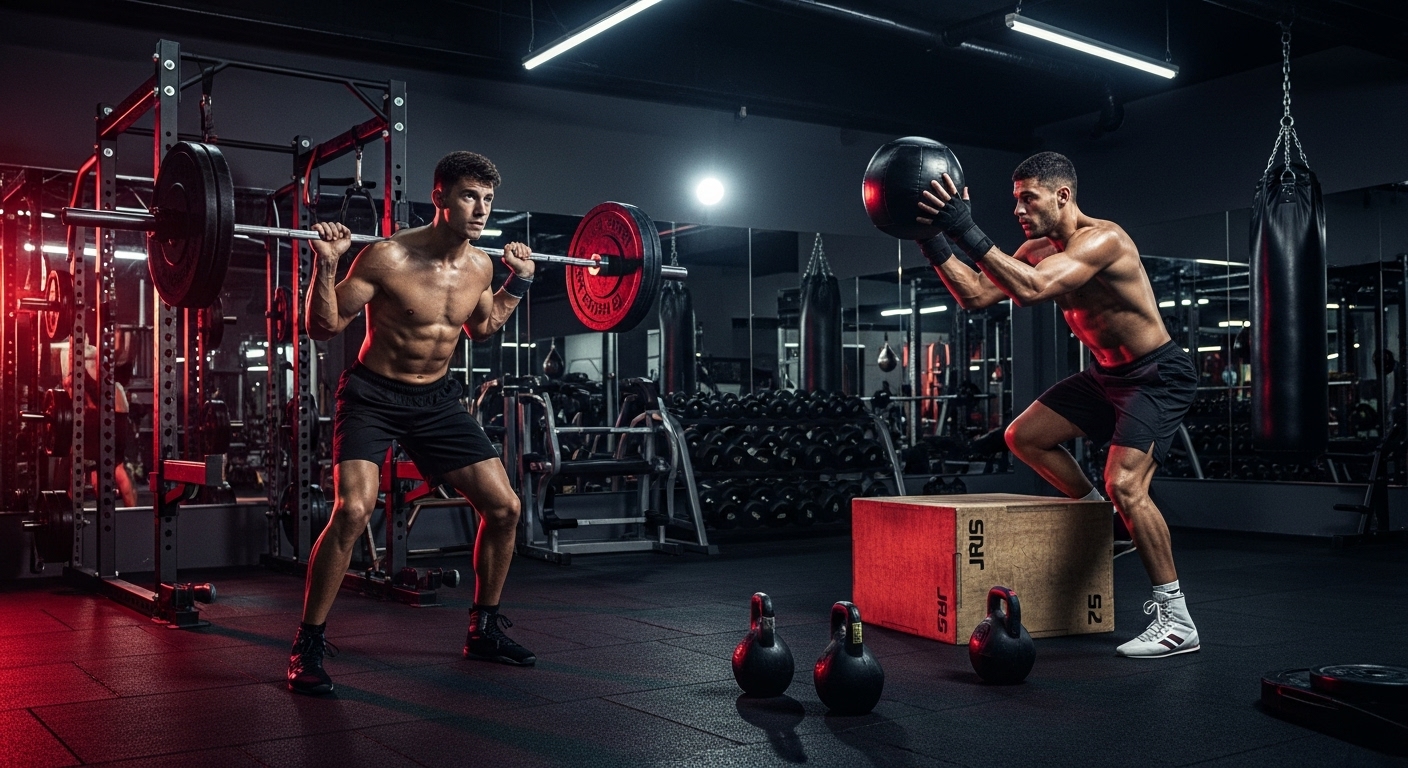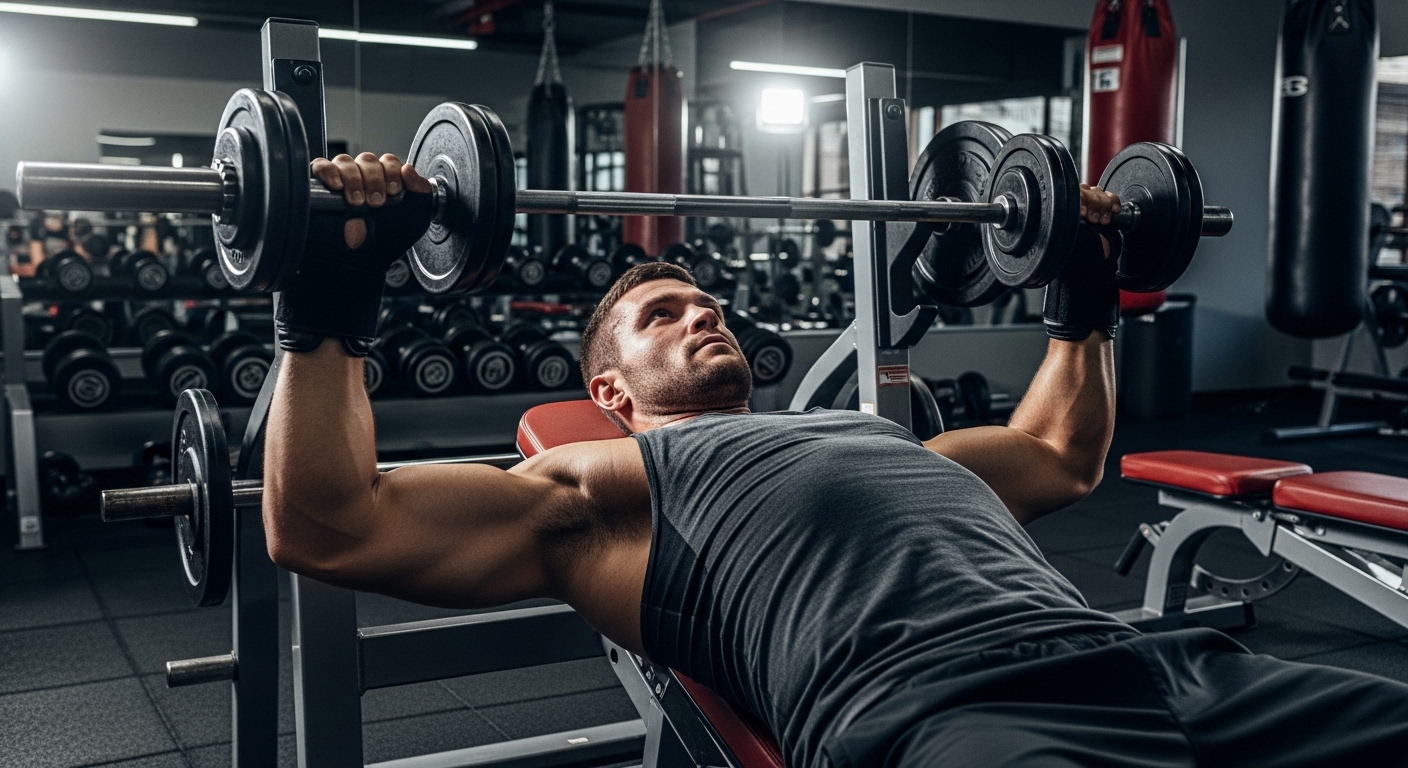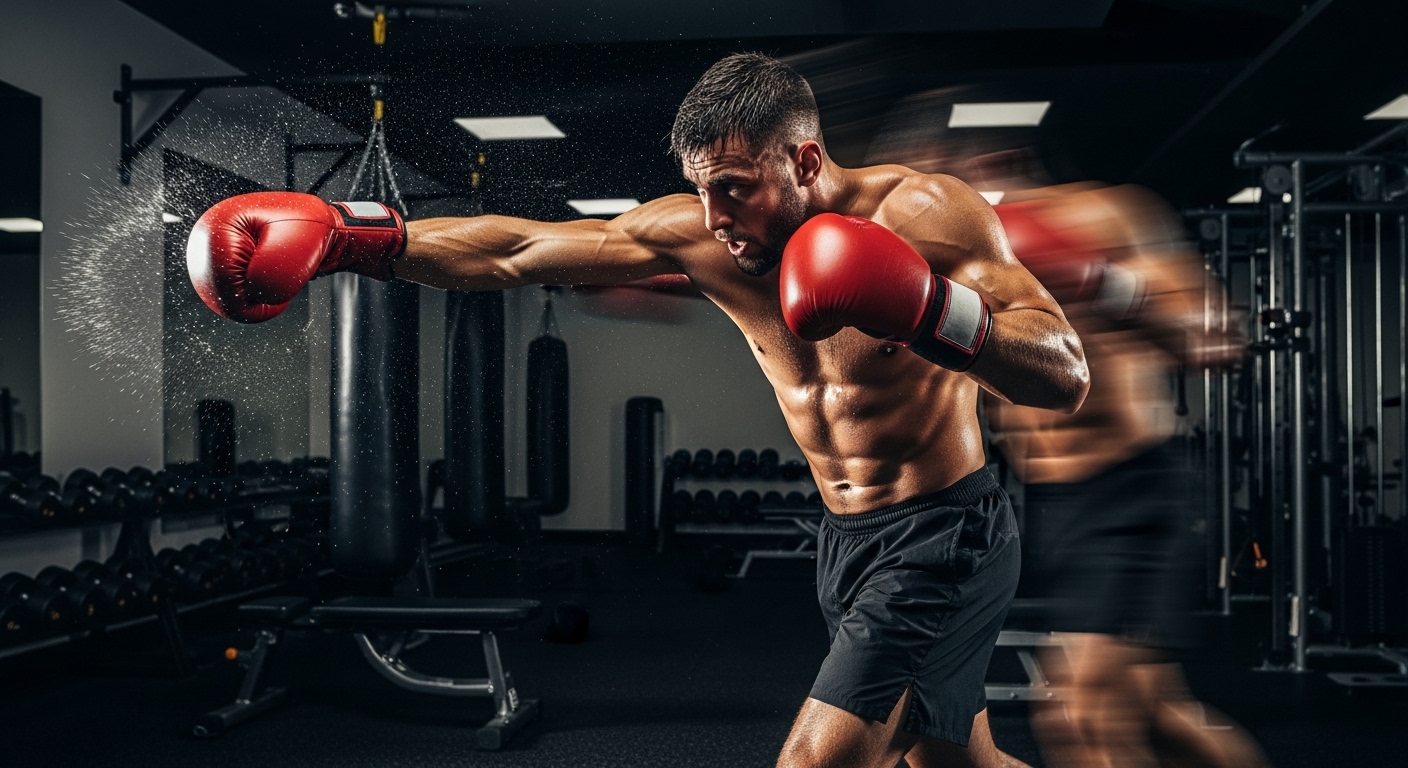In boxing, it’s not just about throwing punches. It’s about making a strong impact. A boxer’s punch power comes from their technique, strength, and fitness.
We look at how boxing-specific power workouts boost a fighter’s punch power. By adding special training, boxers can fight better.
Exercises that boost power and speed help fighters punch harder. Our guide shows the key to power training in boxing. It covers the best boxing workouts.
Key Takeaways
- Understanding the importance of power training in boxing.
- Learning exercises that improve muscular power and speed.
- Discovering how to incorporate specialized training into a boxing regimen.
- Improving overall fighting ability through targeted workouts.
- Enhancing punch impact with effective boxing exercises.
The Science Behind Powerful Punches
A powerful punch isn’t just about being strong. It’s about using your whole body to create force. When you throw a punch, you’re not just moving your arm. You’re using your entire body to make it strong.
Kinetic Chain and Force Generation
The kinetic chain is how our body segments work together to move powerfully. In boxing, this means using our legs, core, and arms to throw a punch. Generating force well is key to a knockout punch. By improving our kinetic chain, we can punch harder.
Boxing coach Cus D’Amato once said,
“The power of a punch is not just in the arm, it’s in the legs, hips, and back.”
This shows how important a well-coordinated body is for a strong punch.
Muscle Groups That Drive Punch Power
Many muscles help make a punch strong. Strong legs are the base, and a stable core helps transfer force well. The back muscles, like the latissimus dorsi, add torque and power.
| Muscle Group | Function |
|---|---|
| Legs | Provides foundation and initial force |
| Core | Transfers force and stabilizes the body |
| Back | Generates torque and additional power |
Essential Boxing Workouts for Maximum Power
To boost punch power, boxers need a solid training plan. This plan should mix strength exercises and conditioning. Boxers should focus on workouts that boost muscle strength, speed, and technique.
Compound Movements for Boxing Power
Compound movements work many muscles at once. They’re great for building the strength and power needed for boxing. Squats, deadlifts, and bench presses are good examples. Adding these to a boxing workout routine can really boost a boxer’s punch power.
Squats and deadlifts strengthen legs and hips, key for punch power. Bench presses help build chest and shoulder strength, making punches more effective.
Explosive Training Principles
Explosive training means doing exercises with maximum force quickly. It’s key for boxers to improve their punch power. Box jumps and medicine ball throws are examples of explosive training for boxing workouts.
These exercises boost muscle power and improve reaction time and coordination. This makes a boxer more powerful in the ring.
Progressive Overload for Boxers
Progressive overload means slowly increasing the weight or resistance in training. For boxers, this means making workouts more intense. By doing this, boxers can keep improving their punch power over time.
It’s important to balance increasing intensity with enough rest to avoid injuries. A well-planned training program with progressive overload helps boxers reach their power goals.

Upper Body Power Exercises
Boxers need strong upper bodies to hit harder and perform better. A good boxing fitness program includes exercises for punching muscles.
Chest and Shoulder Power Drills
Building chest and shoulder strength is key for powerful punches. Drills like:
- Bench Press
- Dumbbell Press
- Pec Dec Fly
are essential. Adding these to your advanced boxing workouts boosts your punching power.

Arm and Back Strengthening Movements
Arms and back must be strong for a strong punch. Exercises such as:
| Exercise | Muscle Group | Benefit |
|---|---|---|
| Pull-ups | Back, Arms | Increased pulling strength |
| Bicep Curls | Arms | Enhanced arm strength |
| Tricep Dips | Arms | Improved punch speed |
These exercises make your punch stronger and more effective.
Medicine Ball Exercises for Punch Force
Medicine ball exercises boost rotational strength and punch force. Throws and rotations with a medicine ball can:
- Enhance core strength
- Improve coordination
- Increase punch power
Adding these to your training improves your boxing skills. You’ll become a stronger opponent in the ring.
By focusing on these exercises, boxers can hit harder and perform better. This makes their boxing fitness program more effective.
Core and Rotational Power Development
In boxing, power from the core and through rotation is key. A strong core helps boxers stay stable while punching. Rotational power makes punches more effective and powerful. We’ll look at exercises and training to boost these important skills.
Torso Rotation Exercises
Torso rotation exercises boost punch power. Medicine ball throws and cable rotations strengthen muscles for rotation. These exercises help boxers transfer force from their lower body to their upper body, leading to stronger punches.
Anti-Rotation Training for Stability
Anti-rotation training keeps boxers stable during fights. Pallof presses and side planks strengthen core muscles against rotation. This improves a boxer’s defense and stability.
Explosive Core Movements
Explosive core movements, like Russian twists with weights and boxer’s crunches, speed up punch power. Adding these to workouts at home can greatly improve a boxer’s performance.
By focusing on core and rotational power, boxers can enhance their boxing skills. This leads to better success in the ring.
Lower Body Power for Boxing Workouts
Boxers need strong lower bodies to do better in fights. A strong lower body helps boxers hit harder, move better, and last longer in fights.
Leg Drive Exercises
Leg drive is key for powerful punches. To get stronger legs, try:
- Deep squats
- Lunges
- Leg press
These exercises build the strength and endurance for quick moves in the ring.
Hip Explosion Drills
Hip explosion is important for powerful punches. To improve, do:
- Box jumps
- Depth jumps
- Resistance band training
These drills help boxers rotate their hips fast, making punches stronger.
Footwork Power Training
Good footwork is essential for boxers. It lets them move fast and avoid hits. Training includes:
- Agility ladder drills
- Cone drills
- Shuttle runs
These exercises boost speed, agility, and quick thinking, making boxers better.
Adding these exercises to boxing training drills helps boxers perform better and stay ahead in fights.
At-Home Boxing Training Drills for Power
Boxing training can be done at home with the right drills. This way, you can boost your punching power without going to the gym. At-home workouts are popular because they’re flexible and effective.
To start, focus on exercises that boost power, technique, and endurance. Here are some drills you can do at home. They include exercises without equipment, minimal equipment circuits, and tips from South African boxing champions.
Equipment-Free Power Exercises
You can get stronger without any equipment. Try bodyweight exercises like shadowboxing, push-ups, and squats. Shadowboxing improves your technique and footwork.
Push-ups strengthen your upper body. Squats boost your leg power. These exercises are great for building strength and endurance.
- Shadowboxing: 3 rounds of 3 minutes each
- Push-ups: 3 sets of 15 reps
- Squats: 3 sets of 20 reps
Minimal Equipment Power Circuits
If you have basic equipment like resistance bands or a medicine ball, you can mix up your workouts. Use resistance bands for banded punches to strengthen your arms.
Medicine balls are good for rotational throws, which boost your core power. These exercises add variety to your at-home workouts.
| Exercise | Sets | Reps |
|---|---|---|
| Banded Punches | 3 | 15 |
| Medicine Ball Throws | 3 | 12 |
South African Boxing Champions’ Home Training Tips
South African boxing champions stress the importance of being consistent and focusing on proper technique. They suggest setting a regular training schedule and paying attention to form to avoid injuries.
They also recommend adding cardio exercises like jumping jacks or burpees to boost endurance. By following these tips, you can improve your punching power and boxing skills at home.
Conclusion: Integrating Power Training into Your Boxing Routine
To boost your boxing skills, add power training to your routine. We’ve covered exercises and tips to up your punch power. This includes compound movements, explosive training, and increasing weight.
By adding these to your fitness plan, you’ll get stronger, faster, and more skilled. Focus on exercises for your upper body, core, and legs. Try medicine ball throws, torso rotations, and leg drive exercises.
Remember to mix power training with technique drills and sparring. This ensures you’re well-rounded. With hard work and dedication, you’ll see big improvements in your boxing.
